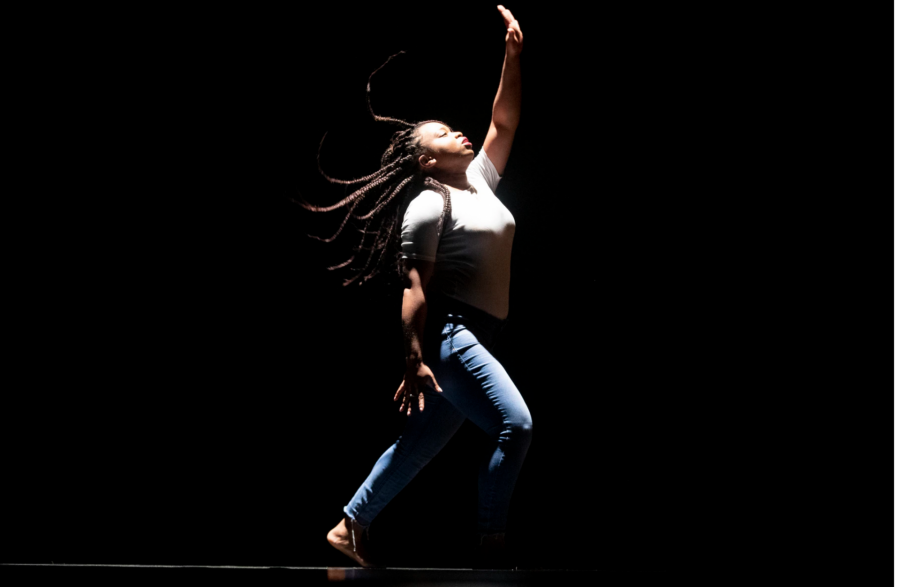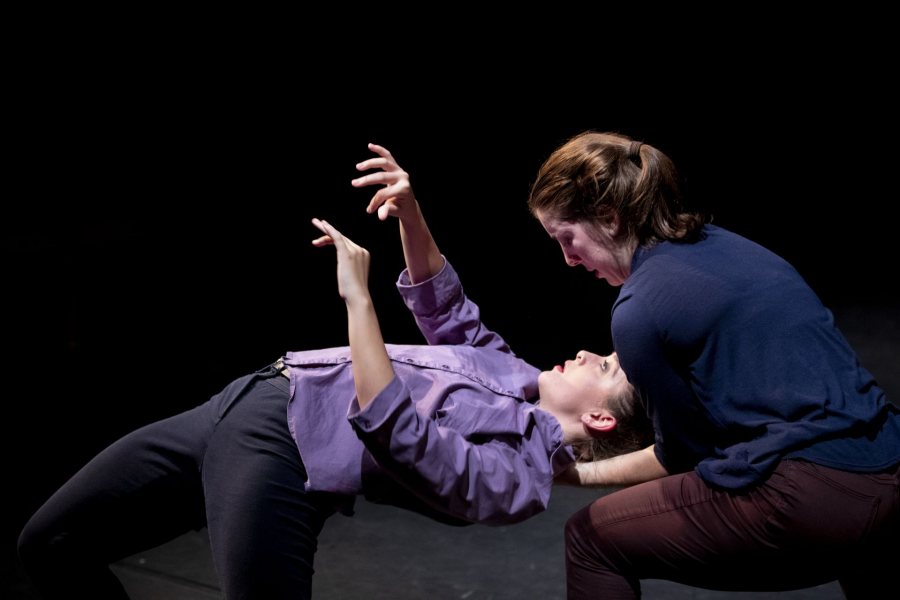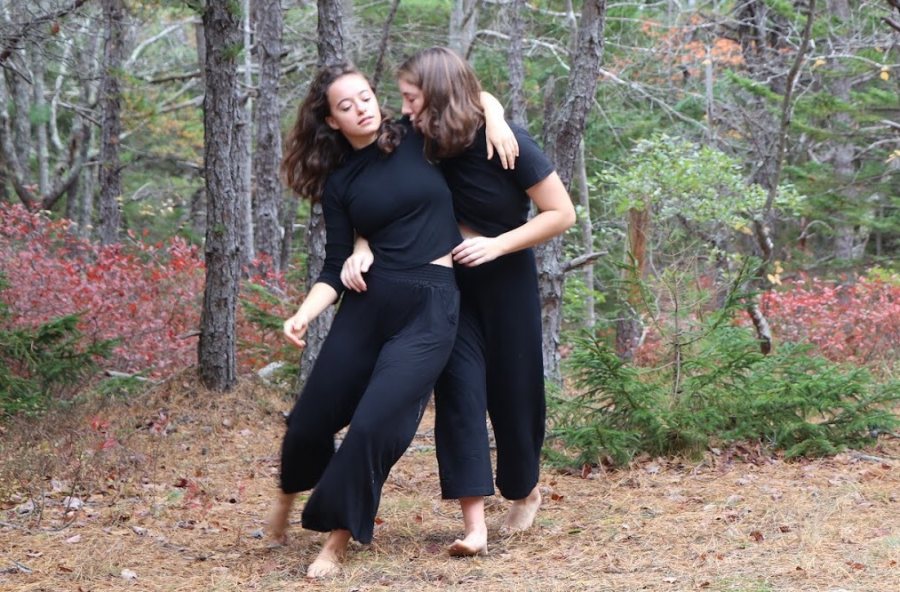Dance Thesis Guidelines



Dance Thesis
During their Senior Year, typically during the Fall, Dance Majors will create and present substantial research in choreography, performance, ethnography, and/or analysis, the parameters of which are developed in conversation with the Thesis Advisor. Each thesis project may look a little different, and often includes both a performance component (i.e. 10-15 minutes of original choreography) and a written component (typically 40-50 pages) outlining and contextualizing the creative research. Alternative formats have included, but are not limited to, community-engaged workshops and immersive dance theater events. Thesis projects may also be completely written, with the length decided upon in collaboration with the Thesis Advisor.
The Proposal
Before a student begins their project, they must submit a thesis proposal by February 1 of their Junior Year, to their Academic Advisor. Approval is under the discretion of the Department of Theater and Dance, who will ultimately make decisions regarding production support.
After consideration of all proposals, the Department of Theater and Dance may request for proposal revisions. Students may embark on their thesis projects only after invitation from the Department. It’s recommended, when possible and applicable, that students apply for support from the Bates Student Research Fund to assist with research, rehearsal and production costs.
The proposal is a 3-5 page document stating as clearly as possible the following, as much as they are applicable to your particular project:
- What and When: In one-two sentences, note what you are proposing (a choreographic work? Written scholarship? Something else?), and when you hope to complete your project. Note: Theses with a performance component will be scheduled in conjunction with departmental decisions regarding the Theater and Dance Production Calendar.
- Statement of Purpose: Provide a brief description that explains what you hope to explore in your research. For a choreographic or performance thesis, please include preliminary details of the work or process. One-two sentence examples: “I hope to choreograph a small group work using queer and feminist creation and rehearsal practices, to be performed in the Fall Dance Concert;” “I hope to make a mediated performance solo installation in the Black Box or IMS. Thematic material still unknown;” “My written thesis will explore the influence of west African dances on modern dance performance forms in the U.S. I will make a small piece to be shown in Plavin Studio in conjunction with research.” Include any research questions you have at this point. If you are proposing a Choreographic or Performance Thesis, please note whether you hope to stage it on Schaeffer Theatre as a part of either the Fall or Spring Dance Concerts, or an alternative venue, and describe why.
- Tools/Techniques: How do you plan to research your topic? Identify the methods you will use in your scholarly or creative research and your projected approach to the process and/or performance. Explain the historical and contextual context for your research. This might include supporting lines of inquiry, interdisciplinary threads to explore, other artists and scholars, embodied research, etc. For a written thesis, include any other proposed methodologies for your research that are pertinent to your work. (eg surveys/interviews, informal showings or workshops, embodied research).
- Preliminary Research and/or Production Schedule: Outline the timeline of your proposed research and any resources needed such as cast size, rehearsal schedule, technical theater and design, interviews, research materials, grant writing, anticipated workshops, travel, etc. Include proposed visits to rehearsals, writing, schedule, and your proposed method for advisor response to progress in both the studio and written work.
- Production Considerations: If your proposal includes specific design or production support, please give a description of each. This may include ideas for lighting design, scenic design, videography, preliminary budget breakdown, etc.
- Annotated Bibliography: Include 5 sources minimum, MLA or Chicago Style. These sources can be written texts, performance works, or other material that support or inspire your research. Each entry should include 3-5 sentences which describe the text/work and why it may be important to your process/project.
- Double Majors: Inform us if you’re a double major and any pertinent information regarding which semester you hope to complete your other thesis, and how you plan to manage the workload.
Outcomes
The Department of Theater and Dance encourages process-oriented research and values experimentation. However, the Dance Thesis project must have tangible outcomes that can be assessed. All Dance Thesis projects require substantial creative and scholarly research that explores a line of inquiry through any number of lenses, including historical inquiry, aesthetic, social, political, and cultural contexts, and embodied experience and experimentation. All Dance Thesis projects must have developed research questions, clear methodology, and creative output. And lastly, all Dance Thesis projects must include a written portion.
The final package of a Dance Thesis includes documentation of the performance(s), a printed program (if applicable), and written work formally presented as a single document following all protocols of Bates thesis guidelines. All written work will be in MLA or Chicago Style, and will include an introduction and chapters outlining academic and creative contexts, methodology and process, reflection, conclusion, and appendices (if applicable).
In conversation with the thesis advisor, and in tandem with the thesis research, students may also choose to create an arts portfolio and/or website. The format and scope of this portion may affect the length of the academic paper, however it does not replace it. For example, a student may choose to build a professional website featuring an artist statement and work samples, and write a 30-40 page paper.
Guidelines for Thesis Assessment
The thesis student and advisor must discuss goals and projected outcome (which may include performance and/or written work scope and length), and agree upon grading criteria before students begin their project. Typical grading criteria for a dance thesis includes research process (30%), performance (30-40%), and a paper (30-40%).
Research Process
This can take many forms depending on the project but articulates the process and methodology of your research. This may include experimentation in the studio, creative practices, generating choreography, literature/performance review, interviews, and other processes.
Performance
A substantial engagement in performance in one or multiple works, as determined by the scope of your creative research. This may include a work produced by the Theater and Dance Department, or an alternative production as approved by the advisor.
Paper
A substantial academic paper of approximately 40 – 50 pages, depending on the form that your writing takes in relation to your research, assessing process and final product. This paper may include images and appendices documenting research and rehearsals. The final product should be written in MLA or Chicago Style, and include a link to performance footage if applicable.